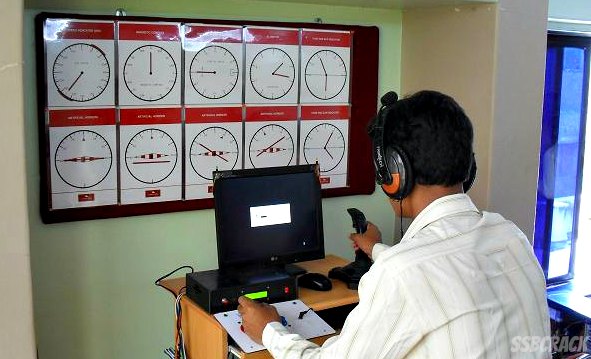.png) About SSBCrack Editorial Team
About SSBCrack Editorial TeamCopyright © 2010-2025 SSBCrack.com
.png) About SSBCrack Editorial Team
About SSBCrack Editorial TeamThere are some differences between a good leader and an effective manager. There are parameters defined for a manager, his grade performance defines his effectiveness. Leaders should be judged by higher requirements, at the time of conflict and usually surprising. An effective manager would have some skills of leadership in his persona and similarly, an effective leader has management skills.
So, what is the difference between both, the fundamental, singular difference between management and leadership is that leadership is about effective change-making and the single-minded application and enforcement of that change.
Each job has certain content with that content there are certain qualities which if a person has better will be successfully in that job. Personality has its own quality and job has its own requirements. If a person has qualities which are compatible to the job he will certainly get recommended for the job.
Also Read
The Parachute Regiment is the elite main Special Forces/airborne regiment of the Indian Army. The parachute regiment consisting of PARA and PARA (SF) battalions is the elite volunteer force of the Indian Army. Because of its specified role, the regiment needs to be kept at optimum level of operational efficiency and physical fitness. Towards this end, this specially selected manpower should be comparatively young, physically fit and mentally robust, intelligent, innovative and highly motivated so as to successfully accomplish the assigned operational tasks.
India’s first supersonic jet fighter the MiG-21 FL was decommissioned after 50 years of service on 11th December 2013. As four MiG-21 FL (Type-77) combat jets streaked across the sky in a box formation for the last time at the Kalaikunda airbase in West Bengal’s, an era in the history of Indian military aviation came to an end. India’s first supersonic jet fighter the MiG-21 FL will be decommissioned after 50 years of service on Wednesday. The aircraft had played a crucial role in the 1971 war with Pakistan. Retiring the FL model, which is the oldest, is the first step to the Air Force’s plan to retire the ageing MiG-21 fleet.
.png) About SSBCrack Editorial Team
About SSBCrack Editorial TeamThe Indian Air Force has aircraft and equipment of Russian, British, French, Israeli, U.S. and Indian origins with Russian aircraft dominating its inventory. HAL produces some of the Russian and British aircraft in India under license.
These aircraft will be phased out between 2014 and 2017. The MiG-21s are planned to be replaced by the indigenously built HAL Tejas.
Even though one cannot be trained for Pilot Aptitude Battery Test, it could be helpful to know the procedure of the test so that a candidate may prepare himself mentally for the test and may approach the test with full confidence.

In this test, the candidate is made to sit in front of a CRT monitor. The chartered path of the flight is defined in that and the candidate is asked to fly along the chartered path by keeping the light representing the aircraft on the monitor, on the chartered path. The instrument stimulates real time situations like loss of height, tilting, etc. and the candidate is expected to control using the joystick, foot pedals and light lever which are similar to actual controls on an aircraft.
Light Control Test Video
This is another test to check the control skills of the candidate. In this, there is a drum of about eight feet length and one feet diameter. There are lines marked on the surface of the drum with some holes on each line. The candidate is given a knob to control that is very sensitive. The drum is rotated and the candidate is expected to align the knob with the lines on the drum as it rotates. Since, the knob is very sensitive, it is not easy to do so. This aptitude is required to maintain the flight under harsh weather conditions when the velocity of the wind disturbs the flight trajectory.
Game Developed by Siddharth Chaturvedi. All Rights rest with Original Developer.
Also Read
Pinaka was test fired successfully from the range of Chandipur-on-sea on 19th december 2013. Pinaka is multiple barrel rocket launcher produced by defence research and development organization (DRDO) for the Indian army. Pinaka rockets played an important role in the kargil war to neutralize the enemy’s power on tiger hill.
Development of Pinaka started in 1986 as the replacement of BM-21 grad1 launchers and the tests were started from 1995.These tests are as a result of the recent development in the rocket system as it has been upgraded to second generation mark II launchers. The older version has a range of 40 km and the latest version now has the strike power of beyond 55km. Pinaka mark-ii will undergo some more tests before been inducted into the army. Pinaka battery consists of: six launcher vehicles, each with 12 rockets; six loader-cum-replenishment vehicles; three replenishment vehicles; two Command Post vehicles (one stand by) with a Fire Control computer, and the DIGICORA MET radar.
Also Read
 Anurag Joshi, Editorial Team
Anurag Joshi, Editorial TeamThe three assessors measure the same 15 officers like qualities using their respective tools and techniques. It is important for you to know what you are getting tested for at the SSB.
The Fifteen Officer like Qualities are.
Indian Air Force (IAF) has been upgrading its combat aircraft fleet since the last few years in order to remain a super power in the Indian subcontinent. With the number of threat increasing from china in the last few years India is increasing its aircrafts inventories and increasing the strike range of the fighters. With the landing of Super Hercules in daulat beg oldi sector in August 2013 and acquiring of C-17 globemaster are some of the examples of flexing of its muscles.
For meeting the present challenges in the region from china India is enhancing its operational capability and maintaining its aircraft on the modern platform.MiG-21, MiG-27 and Jaguar aircraft have already been upgraded and Mirage-2000 and MiG-29 aircraft are planned for upgradation. The Indian Air Force is also planning to upgrade its medium lift helicopters comprising Mi-8, Mi-17 and Mi-17-IVs, as also the AN – 32 transport aircraft.
The IAF today is in the process of a most comprehensive modernisation plan. Over the next few years, the force would induct more Su-30 MKI aircraft, the Light Combat Aircraft (LCA) and the Medium Multi Role Combat Aircraft (MMRCA). There are plans to augment the helicopter and transport fleets too. The IAF is also in the process of acquiring radars in various categories to meet the Air Defence requirements, accurate and advanced weapons, Network Centric Warfare systems, etc, to meet its assigned tasks.
Also Read
 Anurag Joshi, Editorial Team
Anurag Joshi, Editorial Team